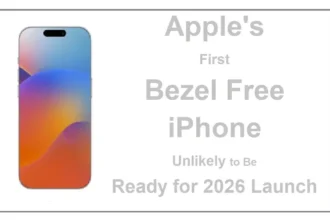When considering a MacBook Air, MacBook Pro, or iMac for trading, it’s essential to consider various factors such as performance, portability, display quality, and battery life. Each model caters to different user needs, so in this article, we’ll compare these three options and assess their suitability for trading.
MacBook Air
Widely seen as the lighter version of the MacBook range, the MacBook Air should not be underestimated. Despite being the softer version of the MacBook Pro, it still packs a punch and can hold its own against most current laptops. The main selling point for many is how easy it is to carry around and use on the go, having excellent battery life, and being incredibly lightweight without sacrificing internal hardware.
Pros
Portability: The MacBook Air is not heavy, making it an excellent choice for any trader who is often on the go and trading in multiple locations. It’s easy to fit into travel luggage and shouldn’t cause any issues at airports.
Battery Life: As we mentioned earlier, the battery life on the MacBook Air is one of the main selling points. If you’re a trader using different tools, like the TradingView app, you shouldn’t have much of an issue as this device can punch above its weight.
Retina Display: As you’d expect, the MacBook Air has an HD Retina display, guaranteeing crisp visuals and eye-catching displays. While this isn’t vital for traders, it certainly doesn’t hurt to have.
Cons

Source: markusspiske, via Pixabay
Performance: The MacBook Air is not as powerful as the MacBook Pro, but this shouldn’t come as a big surprise. As a trader, you are unlikely to be using any applications requiring a huge CPU, but it should hold its own even then.
Limited Ports: This is more of an inconvenience than a significant disadvantage. The MacBook Air has just two USB C ports, meaning you’ll need to buy an adaptor or extender if you want to use other cable types.
MacBook Pro
The MacBook Pro is widely seen as the gold standard for portable computing due to its strong performance, reliability, and sleek design. While these devices don’t come cheap, they certainly pack a punch. They can handle almost anything you throw at them, which is excellent for trading professionals who like to run many energy-intensive applications simultaneously.
Pros
Performance: The MacBook Pro is one of the most powerful consumer-level laptops, equipped with fast processors and advanced graphics options. This is beneficial for running demanding trading software.
Retina Display: As with the MacBook Air, the MacBook Pro also has a Retina display, so you will have excellent clarity when looking at various charts and graphs. This is now the standard, but it’s still something to be aware of.
More Ports: Unlike the MacBook Air, the MacBook Pro has plenty of ports available, so you should be good to get it fully wired up from day one. From Thunderbolt to USB-C, you shouldn’t have an issue connecting external displays and accessories.
Cons
Price: MacBook Pros are generally more expensive than MacBooks and MacBook Airs, so you should make sure to do your research beforehand. They’re a significant investment, so ensure it’s right for your needs.
Weight: While lighter than some traditional laptops, the MacBook Pro is heavier than the MacBook Air. If you plan on carrying your MacBook Pro around often, remember this when purchasing.
iMac

Source: fancycrave1, via Pixabay
As you might know, the Apple iMac is the desktop option in their computing range. This device is powerful and contains everything you could ask for, but it has its limitations — primarily financially and its portability or lack thereof. However, the Apple iMac could be worth considering if you often work from home and don’t mind being limited in terms of working location.
Pros
All-in-One Design: The iMac integrates the display, CPU, and other components into a single sleek unit. This makes things easier, as you won’t need to upgrade to a larger external display, and you’ll have far fewer cables lying around.
Retina Display: iMacs come with an integrated display that is far larger than what you would get with a portable Apple Mac. The added benefit is that you won’t need to spend hundreds (or thousands) on a large Retina display.
Performance Options: iMacs offer a range of configurations, including more powerful CPUs and dedicated graphics options. If you want to upgrade your device at the point of purchase, you can easily do this online.
Cons
Price: iMacs can be much more expensive than the portable Apple Mac range, particularly when opting for higher-end configurations. While this often results in better performance, you should remember that some upgrades may not necessarily be good value.
Limited Upgradability: The all-in-one design means limited user upgradability. While you can upgrade when purchasing, this can’t be changed afterward, so you’ll need to be sure. This can be very frustrating, as any attempt to do it yourself would void the warranty.
Buying Your Apple Mac
If you feel ready to buy your next trading device, you can’t go wrong with the MacBook Pro. It has all the power and performance you would expect from a flagship Apple device but is still portable and easy to carry. While it isn’t cheap, it should prove to be a reliable trading companion for many years, so we’re sure you’ll get good value from it.






